|
Common name |
B-hCLDN18.2 MC38 | Catalog number | 310715 |
| Aliases | SFTA5, SFTPJ | Disease | Colon carcinoma |
|
Organism |
Mouse |
Strain | C57BL/6 |
| Tissue types | Colon | Tissue | Colon |
Gene targeting strategy for B-hCLDN18.2 MC38 cells. The exogenous promoter and human CLDN18.2 coding sequence was inserted into the ROSA26 locus in murine
Protein expression analysis
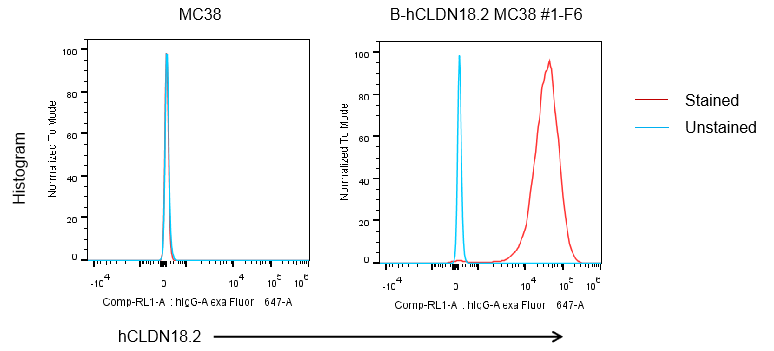

Subcutaneous homograft tumor growth of B-hCLDN18.2 MC38 cells. B-hCLDN18.2 MC38 cells (5x105) and wild-type MC38 cells (5x105) were subcutaneously implanted into C57BL/6 mice (female, n=5). Tumor volume and body weight were measured twice a week. (A) Average tumor volume ± SEM. (B) Body weight (Mean± SEM). Volume was expressed in mm3 using the formula: V=0.5 X long diameter X short diameter2. As shown in panel A, B-hCLDN18.2 MC38 cells were able to establish tumors in vivo and can be used for efficacy studies.
Protein expression analysis in tumor cells
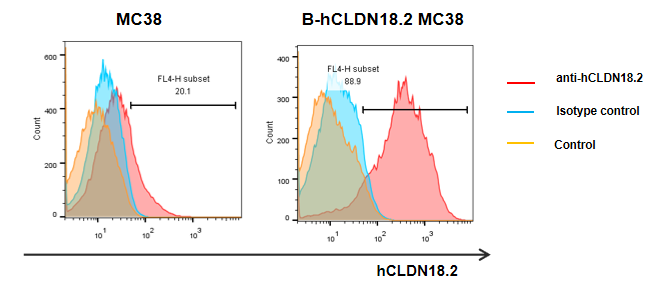
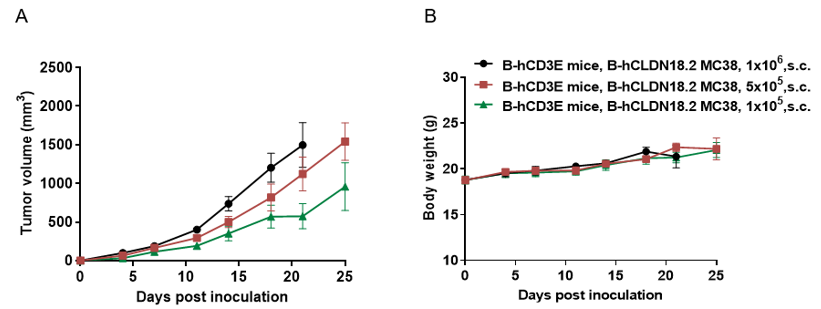

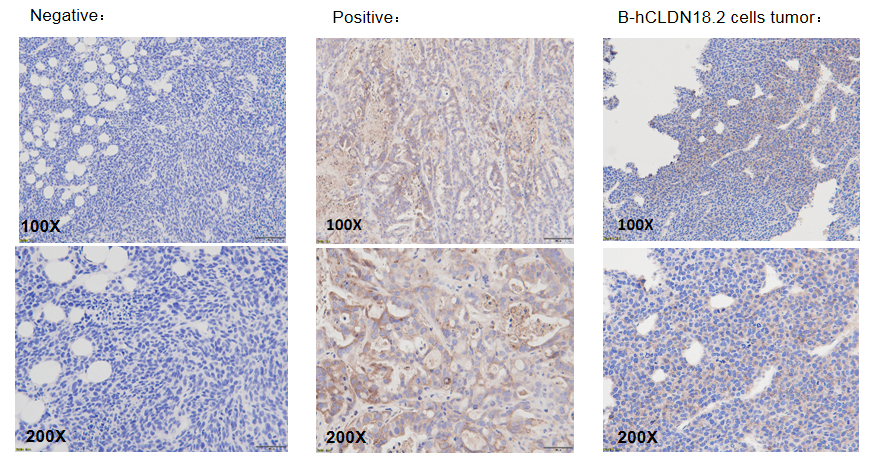
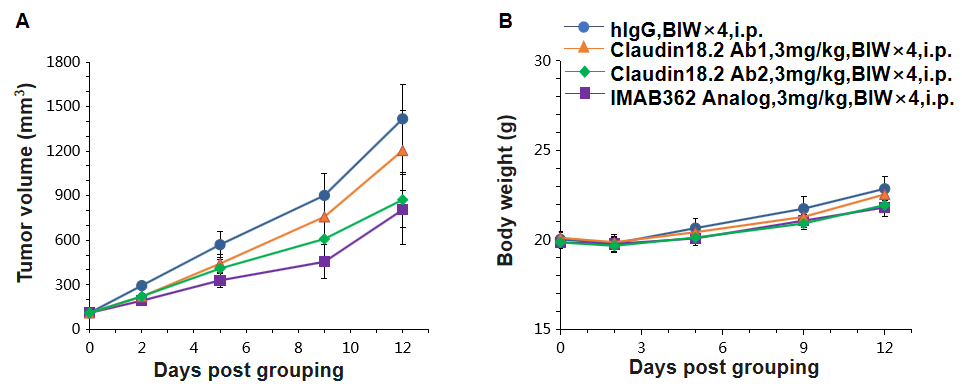
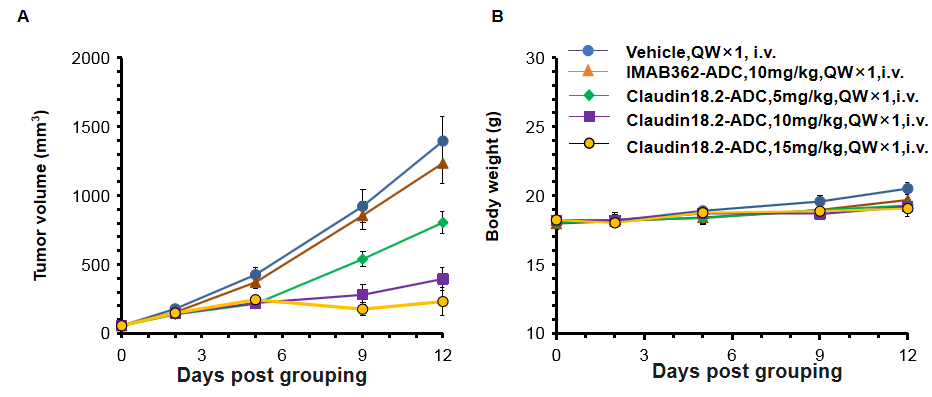
Antitumor activity of anti human CLDN18.2-ADC drugs in C57BL/6 mice. (A) Anti human CLDN18.2-ADC drugs inhibited B-hCLDN18.2 MC38 tumor growth in C57BL/6 mice. B-hCLDN18.2 MC38 were subcutaneously implanted into C57BL/6 mice(n=6). Mice were grouped when tumor volume reached approximately 100 mm3, at which time they were treated with anti human CLDN18.2-ADC drugs with doses and schedules indicated in panel A. (B) Body weight changes during treatment. As shown in panel A, anti human CLDN18.2-ADC drugs was efficacious in controlling tumor growth in C57BL/6 mice, demonstrating that the B-hCLDN18.2 MC38 provide a powerful preclinical model for in vivo evaluation of anti human CLDN18.2-ADC drugs. Values are expressed as mean ± SEM.
When using the B-hCLDN18.2 MC38 cell strain in a publication, please indicate the originate from Biocytogen and stock #310715 in your Materials and Methods section.
 苏公网安备:32068402320845号
网站建设:北京分形科技
苏公网安备:32068402320845号
网站建设:北京分形科技






 010-56967680
010-56967680 info@bbctg.com.cn
info@bbctg.com.cn